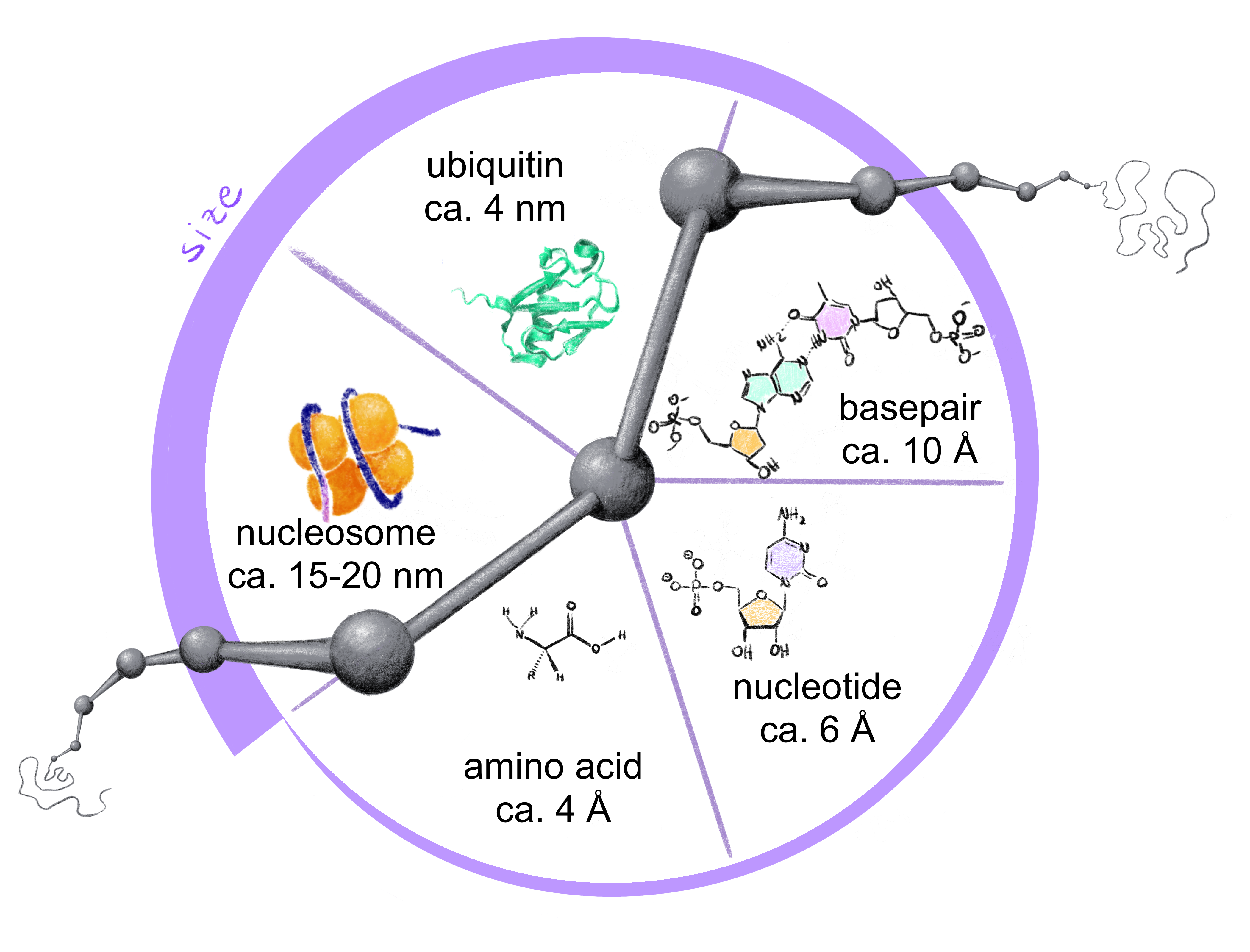Essential biological processes such as transcription from DNA to RNA and translation to proteins (as shown on the right) are governed and depend on the interplay of multiple biomolecules in a complex environment. The interactions of the biomolecules cover a wide spectrum of interaction types, ranging from dimeric interactions to large complexes up to the hierarchy of packing and unpacking of the genome. In this Collaborative Research Centre (Sonderforschungsbereich, SFB) life scientists and polymer scientists will jointly study biomolecules as biopolymers with a focus on their polymeric nature. As shown in recent research, the polymeric nature of biopolymers gives rise to phenomena like phase separation, phase transitions and complex organelle architectures in cells, whose implications for cellular functions are yet to be fully understood. By applying theoretical and experimental concepts from polymer science, this initiative will allow scientists to gain new perspectives on biological phenomena, thereby opening new ways to understand the molecular basis of cellular dysfunction in aging and age-associated diseases, such as neurodegenerative disorders and cancer.






